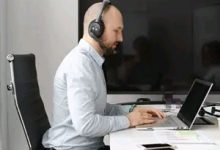Website Visibility: How Long Does It Take to Show on Google Search Results?”
how my website can be Index by google in 2023

Website Visibility: How Long Does It Take to Show on Google Search Results?”
Meta Description: Wondering how long it takes for your website to appear on Google search results? Gain insights into the factors affecting website visibility and discover strategies to optimize your online presence for faster indexing and improved search rankings.
Introduction:
Launching a new website is an exciting milestone, but you might be wondering how long it takes for your website to start appearing on Google’s search results. While there is no fixed timeframe, this SEO post will delve into the various factors that influence website visibility and provide practical tips to help expedite the process. Read on to understand the dynamics of website indexing and improve your chances of ranking higher in search engine results.
Factors Affecting Website Indexing:
- Website Structure and Design: A well-structured website with clear navigation and easily accessible content enhances search engine crawlability. Ensure your website is built with search engine optimization (SEO) best practices in mind, including proper HTML coding, optimized URLs, and a responsive design that performs well across devices.
- Quality Content Creation: Creating high-quality, original, and relevant content is crucial for search engine visibility. Publish engaging and informative articles, blog posts, product descriptions, and other valuable content that targets relevant keywords. Regularly updating your website with fresh content also encourages search engine bots to crawl and index your pages more frequently.
- Site Indexing and Sitemap Submission: Creating and submitting a sitemap to search engines like Google helps them understand the structure of your website and ensures all pages are indexed. Utilize tools like Google Search Console to monitor the indexing status of your website and identify any potential issues that may hinder visibility.
- Backlink Profile: Backlinks, or incoming links from other reputable websites, are an essential element of SEO. They signal to search engines that your website is trustworthy and valuable. Building a diverse and authoritative backlink profile through content promotion, outreach, and networking can positively impact your website’s visibility.
- Website Performance and Speed: A fast-loading website not only provides a better user experience but also influences search engine rankings. Optimize your website’s performance by compressing images, minifying code, leveraging caching techniques, and investing in a reliable hosting provider.
Strategies to Accelerate Website Visibility:
- Leverage Social Media: Promote your website and its content on social media platforms to increase visibility and generate traffic. Engage with your target audience, encourage social sharing, and build an online community that can amplify your website’s reach.
- Local SEO Optimization: If your website targets a specific geographic location, optimize it for local SEO. Claim your business listings on Google My Business, include location-specific keywords in your content, and encourage customer reviews to improve local search rankings.
- Pay-Per-Click (PPC) Advertising: While organic search visibility takes time, PPC advertising can provide instant visibility on search engine results pages. Consider running targeted paid campaigns to drive immediate traffic to your website while your organic visibility grows.
- Monitor Analytics and Make Adjustments: Regularly analyze website analytics to understand user behavior, traffic sources, and keyword performance. Use these insights to make data-driven optimizations, identify opportunities, and refine your SEO strategy over time.
Website indexing, the process by which search engines like Google discover, crawl, and add web pages to their database, can be influenced by several factors. Understanding these factors can help website owners optimize their sites for better indexing and visibility. Here are some key factors that affect website indexing:
- Site Structure and Navigation: A well-organized and logical site structure with clear navigation helps search engine bots easily crawl and understand your website’s content. Use a hierarchical structure, proper internal linking, and user-friendly URLs to make it easier for search engines to index your pages.
- XML Sitemaps: Creating and submitting an XML sitemap to search engines is an effective way to communicate the structure and hierarchy of your website. A sitemap lists all the important pages and their relationship, making it easier for search engines to crawl and index them.
- Robots.txt File: The robots.txt file instructs search engine bots on which pages or directories should be crawled or excluded. Ensure that your robots.txt file is correctly configured to allow access to important pages while blocking irrelevant or sensitive ones that don’t need indexing.
- Website Speed and Performance: A fast-loading website is not only user-friendly but also improves indexing. Search engine bots have limited time for crawling, so a slow website may result in incomplete indexing. Optimize your website’s speed and performance by minimizing code, compressing images, and utilizing caching techniques.
- Mobile-Friendliness: With the increasing use of mobile devices, search engines prioritize mobile-friendly websites. Ensure that your site is responsive and provides a seamless user experience across different devices and screen sizes. Mobile-friendly sites have a better chance of being indexed and ranked higher in search results.
- Quality and Unique Content: High-quality, unique, and relevant content plays a significant role in indexing and search rankings. Create informative and engaging content that aligns with user intent and incorporates relevant keywords. Fresh and regularly updated content signals to search engines that your site is active and worth indexing.
- External Links and Backlinks: Search engines consider external links pointing to your website as a signal of authority and relevance. Encourage natural backlinks from reputable websites to improve your site’s credibility and indexing. However, avoid spammy link-building practices that can have a negative impact on your website’s visibility.
- Social Signals: While not a direct ranking factor, social signals, such as likes, shares, and comments, can indirectly influence website visibility. Engaging content that attracts social interactions can lead to increased visibility, traffic, and potential backlinks.
- Site Security: Search engines prioritize user safety, so having an SSL certificate and using HTTPS encryption is crucial. Secure websites are more likely to be indexed and ranked higher than non-secure ones.
- Crawl Errors and Technical Issues: Regularly monitor and fix crawl errors, broken links, and other technical issues that may prevent search engine bots from indexing your website properly. Use tools like Google Search Console to identify and address these issues promptly.
Remember that indexing can take time, and search engines have their own algorithms and processes. Implementing these factors and best practices will help improve the chances of your website being indexed effectively and appearing in search engine results. Patience, continuous optimization, and staying up-to-date with SEO trends are key to achieving better website visibility.
Quality content creation is a critical factor in website indexing, user engagement, and search engine rankings. Here are some key considerations for creating high-quality content:
- Relevant and Targeted: Understand your target audience and create content that addresses their needs, interests, and pain points. Conduct keyword research to identify relevant topics and incorporate those keywords naturally throughout your content. Deliver valuable and informative content that provides actionable insights or solves a problem.
- Originality and Uniqueness: Aim to create original and unique content that sets you apart from competitors. Avoid duplicating or copying content from other sources, as search engines prioritize originality. Offer fresh perspectives, unique insights, and present information in an engaging and captivating manner.
- Readability and Structure: Make your content easy to read and digest. Use clear headings, subheadings, bullet points, and paragraphs to break down the text. Use concise sentences and simple language while maintaining a professional tone. Incorporate visual elements like images, infographics, or videos to enhance the readability and engagement of your content.
- Value and Depth: Provide comprehensive and in-depth information on the topics you cover. Demonstrate expertise, research, and a deep understanding of the subject matter. Offer actionable tips, step-by-step guides, case studies, or data-driven insights that your audience can benefit from.
- Engaging and Captivating: Grab the reader’s attention from the beginning and maintain their interest throughout the content. Use storytelling techniques, anecdotes, examples, or compelling narratives to make the content relatable and engaging. Incorporate interactive elements like quizzes, polls, or surveys to encourage user participation.
- Formatting and Optimization: Structure your content for both readers and search engines. Use appropriate heading tags (H1, H2, etc.) to organize your content hierarchy. Optimize your content for relevant keywords without overstuffing. Incorporate internal links to other relevant pages on your website to improve navigation and encourage further exploration.
- Regular Updates: Consistently update your content to ensure it remains accurate, relevant, and up-to-date. Outdated content may impact your credibility and user experience. Consider repurposing or refreshing older content to keep it valuable and timely.
- User-Driven Approach: Prioritize the user experience. Address user queries, provide answers to common questions, and engage with your audience through comments or feedback. Encourage social sharing and interaction to increase the visibility and reach of your content.
- Credibility and Trustworthiness: Establish your authority and build trust with your audience. Support your content with credible sources, references, or citations. Include author biographies and credentials where appropriate. Encourage user reviews or testimonials to demonstrate social proof.
- Analytics and Iteration: Monitor the performance of your content using analytics tools. Track metrics like page views, time on page, bounce rate, and social shares. Analyze the data to gain insights into what content resonates best with your audience and make iterative improvements based on those insights.
By focusing on creating high-quality content that meets the needs of your target audience, you can enhance user engagement, attract organic traffic, and improve your website’s visibility and search engine rankings. Remember, quality content is a long-term investment that requires consistency, creativity, and continuous optimization.
Site indexing plays a crucial role in ensuring that search engines discover and understand the content on your website. One effective way to facilitate the indexing process is by creating and submitting a sitemap. Here’s a closer look at site indexing and the importance of sitemap submission:
Understanding Site Indexing: When search engines crawl the web, they follow links from one page to another, discovering and indexing content along the way. However, not all pages may be discovered or indexed during this process. Site indexing is the process by which search engines systematically analyze and add web pages to their database, making them eligible to appear in search engine results.
What is a Sitemap? A sitemap is a file that lists all the important pages of your website, helping search engines understand its structure and content hierarchy. It provides a roadmap for search engine bots to crawl and index your web pages more effectively. A sitemap typically includes URLs, metadata, and other relevant information about each page.
Benefits of Sitemap Submission: Submitting a sitemap to search engines offers several benefits for your website’s indexing and visibility:
- Improved Crawling Efficiency: A sitemap guides search engine bots to important pages that they might have otherwise missed during the crawling process. This ensures that your key content is discovered and indexed promptly, enhancing your website’s visibility in search results.
- Faster Indexing of New Content: If you regularly create new content or update existing pages, a sitemap informs search engines about these changes, prompting them to crawl and index the updated content more quickly. This helps ensure that your fresh and relevant content appears in search results sooner.
- Enhanced Indexing of Deeply Buried Pages: In websites with complex structures or deep hierarchies, some pages may be buried several clicks away from the homepage. A sitemap provides search engines with direct access to these deeper pages, improving their chances of being indexed and surfaced in search results.
- Identification of Priority Pages: Sitemaps allow you to specify the priority of certain pages, signaling their relative importance within your website. By assigning higher priority to critical pages, you can guide search engines to prioritize crawling and indexing those pages first.
- Indexing of Non-HTML Content: In addition to web pages, sitemaps can include URLs of non-HTML content, such as images, videos, PDFs, or other media files. Including these URLs in your sitemap ensures that they are indexed and appear in relevant search results, increasing their visibility.
Submitting Your Sitemap: To submit your sitemap to search engines, follow these steps:
- Generate a Sitemap: Use sitemap generation tools or plugins specific to your website platform to create a sitemap. Ensure that it adheres to the XML sitemap format, which is the preferred format for search engines.
- Register with Search Console: Sign up for Google Search Console (previously known as Google Webmaster Tools) and verify ownership of your website. This allows you to access important data, receive notifications, and submit your sitemap directly to Google.
- Submit Your Sitemap: In Google Search Console, navigate to the “Sitemaps” section and add the URL of your sitemap. Follow the on-screen instructions to submit and verify the sitemap.
- Repeat for Other Search Engines: Although Google is the most prominent search engine, it’s beneficial to submit your sitemap to other search engines like Bing or Yahoo as well. Each search engine may have its own process for sitemap submission, so consult their respective webmaster tools or documentation.
- Regularly Update and Resubmit: Whenever you add new content or make significant changes to your website, update your sitemap and resubmit it to the search engines. This ensures that search engines stay informed of the latest updates and can index your content accordingly.
Remember, while submitting a sitemap improves the chances of your pages being indexed, it doesn’t guarantee immediate or preferential ranking in search results. Search engines still determine rankings based on a variety of factors, including content relevance, quality, and user signals. Nevertheless, submitting a sitemap is a fundamental step in optimizing your website for better indexing and visibility.
Building a strong backlink profile is a crucial aspect of search engine optimization (SEO). Backlinks are external links from other websites that point to your site, indicating its credibility, authority, and relevance. Here are some key considerations for managing your backlink profile:
- Quality over Quantity: Focus on acquiring high-quality backlinks from reputable and relevant websites. A few authoritative and relevant backlinks are more valuable than numerous low-quality ones. Look for websites with strong domain authority, reputable industry publications, and influential bloggers in your niche.
- Natural and Organic Link Building: Aim for natural and organic link building by creating valuable, shareable content that naturally attracts backlinks. Develop compelling content that addresses industry pain points, offers unique insights, or provides practical solutions. When others find your content valuable, they are more likely to link to it voluntarily.
- Diverse Link Sources: Seek links from a diverse range of sources. A well-rounded backlink profile includes links from different types of websites such as blogs, news sites, directories, social media platforms, and industry-specific websites. This diversity adds credibility and signals to search engines that your website is valuable and relevant across various contexts.
- Relevant Anchor Text: Anchor text is the clickable text that appears in a hyperlink. Use relevant anchor text that describes the linked page accurately. Avoid keyword stuffing or using repetitive anchor text, as it can raise red flags with search engines. Instead, focus on using descriptive and natural anchor text that enhances the user experience.
- Avoid Black Hat Techniques: Stay away from black hat SEO techniques that aim to manipulate search rankings through unethical practices. These may include buying backlinks, participating in link schemes, or engaging in link farms. Such practices can lead to severe penalties from search engines, negatively impacting your website’s visibility.
- Monitor and Disavow Toxic Links: Regularly monitor your backlink profile for any low-quality or toxic links. Toxic links come from spammy, irrelevant, or penalized websites and can harm your site’s reputation and search rankings. If you find toxic links, disavow them using Google’s Disavow Tool or contact webmasters to remove them.
- Relationship Building: Actively engage in relationship building within your industry. Network with influencers, industry experts, and other website owners. Building relationships can lead to natural backlink opportunities, guest blogging opportunities, and collaborations that boost your backlink profile.
- Social Signals: While social media shares and engagement do not directly impact backlinks, they can indirectly influence them. Promote your content on social media platforms to increase its visibility and reach. When content is shared and talked about, it has the potential to attract backlinks from interested parties.
- Regular Backlink Analysis: Utilize backlink analysis tools to monitor your backlink profile regularly. Identify new backlinks, assess their quality, and analyze their impact on your website’s performance. This analysis helps you understand which backlinks are valuable and which ones may need attention.
- Ongoing Link Building Efforts: Building a strong backlink profile is an ongoing process. Continuously seek opportunities to acquire new high-quality backlinks. This may involve guest blogging, contributing to industry publications, participating in relevant forums, or creating valuable content that naturally attracts backlinks.
Remember, developing a strong and authoritative backlink profile takes time and effort. Focus on quality, relevance, and ethical practices to ensure the long-term success of your SEO efforts.
Website performance and speed are crucial factors that significantly impact user experience, search engine rankings, and overall website success. Here are some key considerations for optimizing website performance and speed:
- Minimize HTTP Requests: Reduce the number of HTTP requests required to load your web pages. Combine multiple CSS and JavaScript files into a single file and use CSS sprites for combining multiple images into a single image. This reduces server requests and improves page load time.
- Enable Browser Caching: Implement browser caching to store static resources like images, CSS files, and JavaScript files on the user’s device. This allows subsequent page visits to load these resources from the cache, reducing the need to fetch them from the server again.
- Optimize Images: Compress and optimize images without compromising quality. Use image compression tools or plugins to reduce file sizes. Additionally, specify image dimensions in your HTML or CSS to ensure the browser allocates the necessary space, preventing layout shifts during page rendering.
- Minify CSS and JavaScript: Minify your CSS and JavaScript files by removing unnecessary spaces, comments, and line breaks. This reduces file sizes and improves loading speed. Use minification tools or plugins to automate this process.
- Use Content Delivery Networks (CDNs): Utilize CDNs to distribute your website’s static content across multiple servers worldwide. CDNs store cached versions of your site in various locations, reducing the physical distance between the user and the server and improving load times.
- Optimize Code and Scripts: Write clean and efficient code to minimize rendering and execution time. Remove unnecessary or redundant code, use asynchronous loading for JavaScript files when possible, and place JavaScript files at the bottom of your HTML document to prevent blocking page rendering.
- Implement Lazy Loading: Implement lazy loading for images and videos, which defers the loading of non-visible media elements until they are about to come into view. This reduces initial page load time and improves the perceived speed of your website.
- Reduce Server Response Time: Optimize your server and hosting environment to reduce server response time. Use caching mechanisms, upgrade to a faster server or hosting plan, and leverage content delivery networks (CDNs) to distribute server load and reduce latency.
- Enable GZIP Compression: Enable GZIP compression on your server to compress website files before sending them to the user’s browser. Compressed files significantly reduce file sizes, resulting in faster data transfer and improved loading speed.
- Regularly Monitor and Optimize: Continuously monitor your website’s performance using tools like Google PageSpeed Insights, GTmetrix, or Pingdom. Identify performance bottlenecks, optimize your website accordingly, and regularly test to measure the impact of your optimizations.
By prioritizing website performance and speed, you enhance user experience, increase engagement, and improve search engine rankings. A fast-loading website creates a positive impression, reduces bounce rates, and encourages visitors to explore more of your content. Implementing these optimizations will contribute to a smooth and efficient user experience, ultimately benefiting your website’s success.
#how long website can take to rank on google/#how my website can be in the first page on search result/#website traffic/google search result/#google trends/#google search consol/#keyword researh
arewanahiya.com







